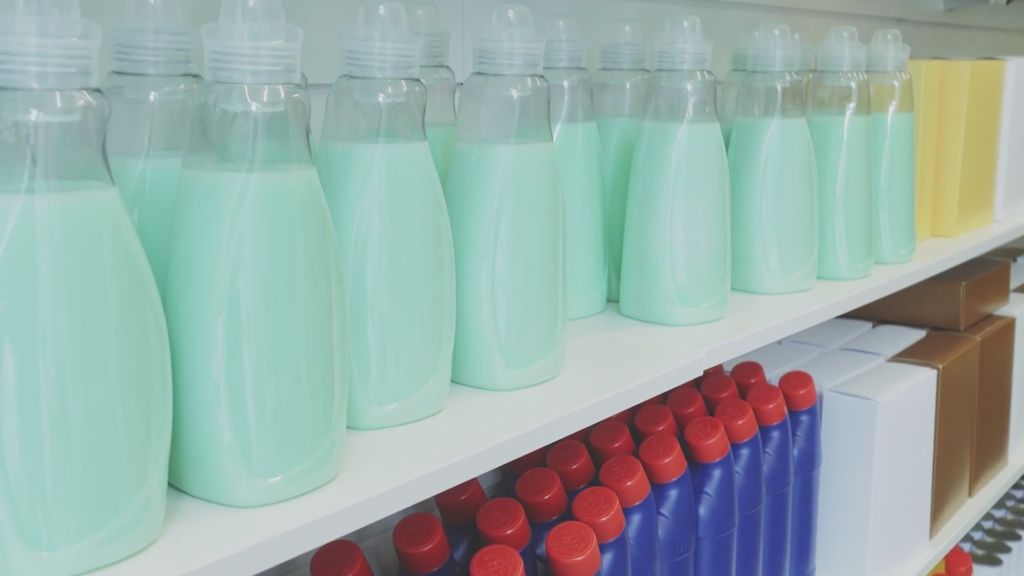Imagine you walk into a shop looking for a snack. You’re trying to decide what to get, but all the sandwiches are in plain windowless cartons, and all the crisps are in plain bags. There’s no information written down anywhere. You ask a shop assistant for help, but they don’t seem to understand what the problem is. You’re left feeling frustrated and isolated, when all you wanted to do was pick up a quick snack.
It might sound far-fetched to many people, but for those who experience certain disabilities, this frustrating experience could sound all too familiar. So familiar, in fact, that the blind people’s charity RNIB turned the concept into a fascinating video campaign designed to raise awareness of the challenges faced by blind shoppers across the world every day.
You could argue this problem is created by inadequate packaging and labelling. But that also means it’s within the power of the packaging industry to solve the problem – a proposition that brought Daphne Mavroudi-Chocholi, Managing Director of RNIB Enterprises, to Packaging Innovations & Empack 2025. Daphne took to the Innovation & Design stage to share her expertise in an insightful panel discussion titled ‘Innovation Spotlight: How smart packaging will shape the future of brand experiences’, a wide-ranging talk that covered topics like accessibility, the development and applications of AI, and anti-counterfeiting.
The time is now for inclusive design
For those who were unable to attend this remarkable discussion, Daphne has one key message she’d like to share. “83% of disabilities are acquired,” she says. “Maybe you’ve had a stroke or an accident, or you find your eyesight is deteriorating with age-related macular degeneration. So when we’re designing products and experiences, it’s important to design for everybody. Because it could be our future.
“I understand marketing real estate is critical, and there’s a lot of competition that brands have to deal with on-shelf. But if the pack isn’t accessible, then all of the effort and thought that has gone into differentiation, bringing in innovation, and driving sustainability immediately disappears when a consumer can’t decipher if they’re picking up salt or sugar.”
RNIB Enterprises works with businesses from a range of sectors to help make their products more accessible, whether through education or design collaboration. The rewards of doing so, she says, speak for themselves. “Inclusive packaging is a huge opportunity for an organisation. When we design with accessibility in mind, we build better products, better packs, and better experiences for everyone. As manufacturers are now redesigning packaging to be more sustainable, there’s a huge opportunity here to go back and design for everybody.”
Building accessibility from the ground up
Daphne is at pains to point out that ‘accessibility’ is not something that can be added on to an existing solution like a sticker or a label. It’s an idea that has to be designed into a pack from the ground up, represented by every element of the final product.
“In my experience, it’s extremely expensive when you’re trying to implement accessibility as an afterthought,” she continues. “Yes, you can put a QR code on the pack, but if it’s not really findable, you’ve run the race but you haven’t finished. There needs to be some mechanism that makes people aware of these features so you can guide them to it.
“Is that code findable in the crowded space on-pack? How does it link to our ecosystem? How do we use it in a way that the individual can understand? It’s very variable. That’s where we want to work with brands to educate them using the expertise we can bring to the table.
“There is no cheat sheet on what it feels like to have age-related macular degeneration. So packaging designers need to involve individuals with lived experience and really listen to them to understand what the main barriers are. It’s one thing to read it on a piece of paper, but it’s very different to live it. My point of action for the panel, and for anyone reading this, would be to get involved with the disabled community, talk to individuals, and reach out to us.”
Where will the journey take us?
While developing more inclusive packaging is an ongoing process of improvement, it is important to recognise the huge strides the industry has made already. With giants of the retail world such as Amazon making ‘frustration-free’ packaging a major plank of their business strategy, packaging is now easier to engage with than ever thanks to the spread of innovations like braille printing, high-contrast QR code designs, and easy-open tear tapes.
Daphne is optimistic. “There’s a lot more we can do, but momentum is building. Unilever announced recently that it has 3.2 million SKUs out there with accessible QR codes, for example. And it’s really nice to be having impactful conversations about the post-purchase experience at events like Packaging Innovations.
“It’s a journey, and the big question is, what happens next?”
Daphne concludes with a question – and it falls to the packaging industry to come up with the answers. Those answers could well be inspired by events like this – in fact, it could be that the next big thing will end up being inspired by Daphne’s words on the Innovation & Design stage at Packaging Innovations 2025.
In the years to come, any individual reading this could end up relying on inclusive packaging to engage with the products they need. But, for millions of people, that is their reality today. As the packaging industry transitions into a new age of sustainability and digital innovation, the ideas and insights on show at Packaging Innovations will ensure that these people – today, and in the future – will never be left behind.
www.londonpackagingweek.com
